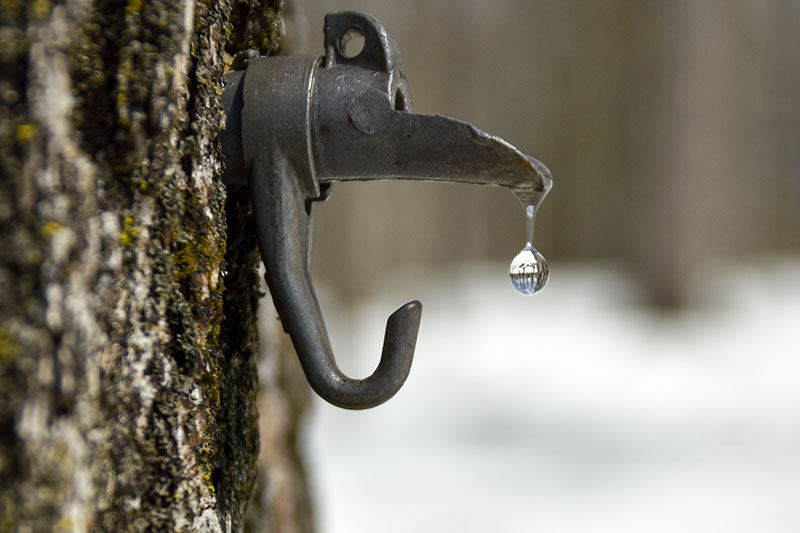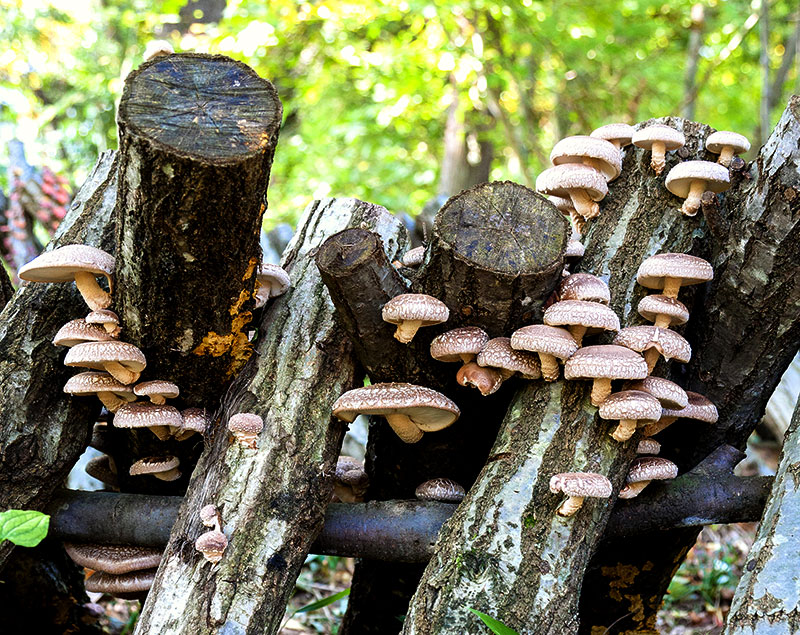
Working with nature sometimes means seeing solutions or opportunities where others would see landscape problems. This is the intentional practice of permaculture gardeners, wild-foods foragers and non-timber forest product harvesters.
At a recent panel discussion at the University of Kentucky, forest-based teachers shared ways that Mother Nature provides opportunities. We just need to look beyond seeing a landscape problem to work in harmony with her.
Problem: Weedy Trees

Opportunity: Tap Their Sweet Potential for Syrup
Box elders, sugar maples, silver maples and red maples sprout up all over the edges of farms in the bluegrass region. People have cultivated the land for centuries by fighting off its natural tendency toward reforestation, creating what some see as a landscape problem.
Maples of all sorts hold a sugary commodity within that is simple to extract without harming the trees. Syrup production was once a homesteading mainstay, and yet extension and forestry agents are quick to recommend clearing out weedy trees to make space for crops.
Seth Long and the Kentucky Maple Syrup Association recognize that it’s not a product the South is known for. The climate is right (for now), with the necessary freeze-thaw cycles cooperating from January into early March this year.
Long’s first year of maple tapping used 100 trees. Three years later, he has 270 trees in production, with a potential of 500 that he’ll rotate through each year.
Problem: Steep Slopes

Opportunity: Let Gravity Work in Your Favor
Seth Long and his family accepted the fact that they would have to haul 50 to 70 gallons of watery sap to make one gallon of syrup. But lugging buckets up and down 60-degree slopes was a limiting factor in their production process.
With a new tubing system attached to the taps on the trees running down to the “sugar shack” at the bottom of the hill, gravity drastically reduces the labor involved.
In addition, the natural vacuum created by the tubing system increased Long’s yield by 300 percent. They also capture the water that is removed from the sap by using a reverse osmosis machine to process it.
This reduces the heat and fuel costs, increases the sugar content, and the by-product is purified water that can be bottled and sold.
Problem: Mismanaged Forests

Opportunity: Use the Extra Trees to Cultivate Mushrooms
Jack Stickney has been raising shiitakes and other cultivated mushrooms for a few decades.
As a professional geologist, he has an intimate knowledge of his 140 acres near the scenic Red River, and he has won awards for his land stewardship and sustainable cattle management.
However, he had a landscape problem. The forested areas of his property were overgrown and their health was suffering.
With timber stand improvement, he aims to improve the quality of the trees and reduce the quantity. The result? A surplus of freshly cut hardwood logs, particularly oaks, that are perfect for shiitake inoculation.
Stickney claims that “Kentucky should be the mushroom capital of the world” because of the abundance of wild mushrooms in the forests and the surplus of woody media for cultivated varieties.
In Eastern Kentucky, where strip mining has left properties labeled as “worthless,” an attitude of resourcefulness is replacing resource extraction.
Values shift. The Appalachian economy is diversifying away from coal.
However, there is no “magic bullet,” says Long. Instead, he and other innovative farmers such as Stickney are finding many “magic beebees,” various ideas that will work together with natural systems to fill the gap that one major industry’s decline has left.




